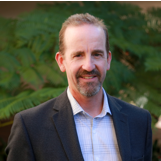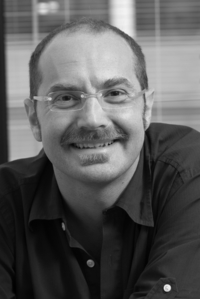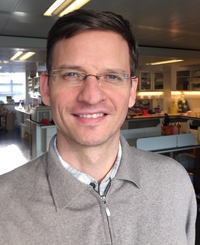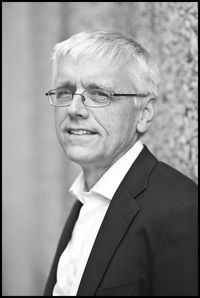Plenary talks
Systems Approaches to Treating Diabetes
Francis J. Doyle III
School of Engineering and Applied Sciences, Harvard University
Diabetes is a disease that afflicts over 400 million individuals worldwide and is characterized by a dysregulation of blood sugar levels in the blood. In type 1 diabetes, the beta cells in the pancreas are destroyed, removing endogenous insulin production and thus necessitating exogenous insulin administration. In type 2 diabetes, the more prevalent version, insulin is produced, but the body fails to respond appropriately. Over the years our group has studied both type 1 and type 2 diabetes, with model-based control systems approaches for the optimal delivery of insulin, and robust control approaches to the identification of drug targets in the cellular regulatory network. I will provide an overview of the systems biology approaches employed by our group to study diabetes, from signaling models to pharmacokinetic/pharmacodynamic patient models. These methods enable the personalized and predictive medicine approaches that are receiving increasing attention. The role of models and control theoretic sensitivity analyses in both drug targeting and drug delivery will be detailed. A novel application of the structured singular value to the glucose signaling network will be shown, with relevance to type 2 diabetes drug targets. Finally, encouraging clinical results from over 1000 individual patient tests will be described, including systems issues for FDA review as well as a path to eventual commercialization.
| Frank Doyle is the John A. Paulson Dean of the School of Engineering and Applied Sciences at Harvard University, where he also is the John A. & Elizabeth S. Armstrong Professor. Prior to that he was the Mellichamp Professor at UC Santa Barbara, where he was the Chair of the Department of Chemical Engineering, the Director of the UCSB/MIT/Caltech Institute for Collaborative Biotechnologies, and the Associate Dean for Research in the College of Engineering. He received a B.S.E. degree from Princeton, C.P.G.S. from Cambridge, and Ph.D. from Caltech, all in Chemical Engineering. He has also held faculty appointments at Purdue University and the University of Delaware, and held visiting positions at DuPont, Weyerhaeuser, and Stuttgart University. He has been recognized as a Fellow of multiple professional organizations including: IEEE, IFAC, AIMBE, and the AAAS. He is the President for the IEEE Control Systems Society, and is the Vice President of the International Federation of Automatic Control. In 2005, he was awarded the Computing in Chemical Engineering Award from the AIChE for his innovative work in systems biology, and in 2015 received the Control Engineering Practice Award from the American Automatic Control Council for his development of the artificial pancreas. |  |
Controlling gene expression from inducible promoters in yeast and mammalian cells
Diego di Bernardo
University of Naples "Federico II"
A crucial feature of biological systems is their ability to maintain homeostasis in spite of ever-changing conditions. In this talk, I will show how the engineering feedback control paradigm can be applied in synthetic biology in order to force a the expression of a gene to be in a desired range, or to change in time with a desired dynamics (e.g. pulsatile expression, sinusoidal expression etc.) from inducible promoters. Examples on the control of gene expression in yeast and mammalian cells will be shown.
|
Diego di Bernardo received the "Laurea cum laude" in Electronic Engineering in January 1997 by the University of Naples "Federico II". In 2001, thanks to a single three-year scholarship "Marie Curie" of the European Commission, received Ph.D. (PhD) from the University of Newcastle School of Medicine, UK, in the laboratory of Prof. Alan Murray. Until April 2002 he was postdoctoral researcher at the Wellcome Trust Sanger Center in Cambridge (United Kingdom) in the laboratory of Dr. Tim Hubbard. From May 2002 to December 2002 was postdoctoral researcher in the laboratory of Prof. Jim Collins in the Department of Bioengineering at the University of Boston, USA. Since January 2003 he is an independent researcher (Principal Investigator) at the Telethon Institute of Genetics and Medicine in Naples (TIGEM) where he directs the Genetics, Genomics and Systems Biology research program. In November 2007 he became Assistant Professor at the University of Naples "Federico II" and in November 2015 Associate Professor in Biomedical Engineering at the Dept. of Chemical, Materials and Industrial Engineering. He is currently Associate Editor of the IEEE / ACM Trans Comput. Biol. and Bioinform. He coordinated national European and international research projects in the field of Systems and Synthetic Biology (including European Union FP6, FP7 and H2020, HFSP, Italian Telethon Foundation and the Italian Ministry of Health). |
 |
Control engineering meets synthetic biology: shared resources and feedback considerations for better engineering of bacterial cells
Guy-Bart Stan
Imperial College London
In this talk I will give an overview of some of our research activities in the "Control Engineering Synthetic Biology" group, where we focus our efforts on developing foundational forward-engineering methods to mathematically model, control, and experimentally implement synthetic gene circuits and cellular systems that aim at increasing the robustness, performance, and genetic stability of engineered cells. During the talk, I will propose some approaches to answer the following core questions in systems and synthetic biology:
- How can we design taking into account shared resources to improve growth rates, genetic stability and robustness of synthetic biology systems?
- How can we improve the dynamic performance (e.g. transient and response time) of synthetic biology systems?
- How can we use cellular resources more efficiently to simultaneously improve growth rates and production yields?
In particular, I will present some recent work on the development of various de novo biomolecular feedback mechanisms in bacterial cells (mainly E. coli) that we use to answer the above questions. Our envisioned target applications for these novel designs include cell-based medicine, more efficient biosynthesis, and scale-up in synthetic biology and biotechnology.
|
Dr Guy-Bart Stan is a Reader (equiv. Associate Professor) in Engineering Design for Synthetic Biology and the head of the "Control Engineering Synthetic Biology" group at the Department of Bioengineering of Imperial College London, U.K. Dr Stan received his PhD in Applied Sciences (mathematical analysis and control of nonlinear dynamical systems) from the University of Liege (Belgium) in March 2005 and subsequently worked for Philips Applied Technologies as Senior Digital Signal Processing Engineer and Coordinator of the R&D teams at Eindhoven (The Netherlands) and Leuven (Belgium). From January 2006 until December 2009, he was as PostDoctoral Research Associate in the Control Group of the Department of Engineering at the University of Cambridge, first supported by a EU Marie Curie Intra-European Fellowship (Jan 2006-Dec 2006) and then by the UK EPSRC (Jan 2007 - Dec 2009). He joined the Department of Bioengineering at Imperial College London in December 2009 as a founding member of the Centre for Synthetic Biology and Innovation (http://www.imperial.ac.uk/synthetic-biology). He is one of the recipients of the prestigious UK EPSRC Fellowship for Growth in Synthetic Biology. |
 |
Maps for when the living gets tough: Maneuvering through a hostile energy landscape
Hans V. Westerhoff
University of Amsterdam
VU University Amsterdam
University of Manchester
With genome sequencing of thousands of organisms, a scaffold has become available for data integration: molecular information can now be organized by attaching it to the genes and their gene-expression products. But of course, it is the genome that is selfish not the gene. By using mass conservation and balance relationships, the metabolic part of the functioning genome can be organized into a maps that enable functional interpretation of the fitness of the genome, and hence of its genes collectively. Using flux balance analysis one can liven up such genome-wide metabolic maps and calculate the theoretical capabilities of the living organism. Here we shall discuss how this elucidates how organisms such as the ones present when life on earth began, are able to assimilate the Gibbs energy and Carbon that Life needs for its reproduction and maintenance, from their Gibbs-energy-poor environment. We shall address how C. ljungdahlii may use at least two special features and one special pathway to this end, i.e. gear-shifting, electron bifurcation and the Wood-Ljungdahl pathway. The gear-shifting is needed because of the fairly high Gibbs energy quant in ATP. We will discuss a similar network-based gear shifting in S. solfataricus. Since the Wood-Ljungdahl pathway uses hydrogen gas and has CO as an intermediate, we examined whether the C. ljungdahlii map can also help solve a less academic problem, i.e. the management of waste. We find that the organism itself might be able to turn hydrogen gas and CO, which as syngas becomes available upon incineration of waste, into biodegradable plastic, provided it is engineered with two additional genes.
| Hans Westerhoff is a long time researcher of how dynamic interactions between components of biological systems generate function. He started this in bioenergetics, non-equilibrium thermodynamics, and metabolic control analysis. After a PhD at the University of Amsterdam and stays at the University of Padova, the US National Institute of Health and the Netherlands Cancer Institute, he is now Professor of Synthetic Systems Biology at the University of Amsterdam, Professor of Systems Biology and Director of the Manchester Doctoral Training Centre for Systems Biology at the University of Manchester, and Professor of Microbial Physiology at the VU University Amsterdam. He is one of the drivers of the silicon human initiative and the Infrastructure for Systems Biology Europe (ISBE). He has been involved in determining molecular biochemistry properties of bacteriorhodopsin, DNA gyrase and various glycolytic enzymes of yeast and E. coli, as well as control and regulation aspects in microbial and mammalian cells. |  |




